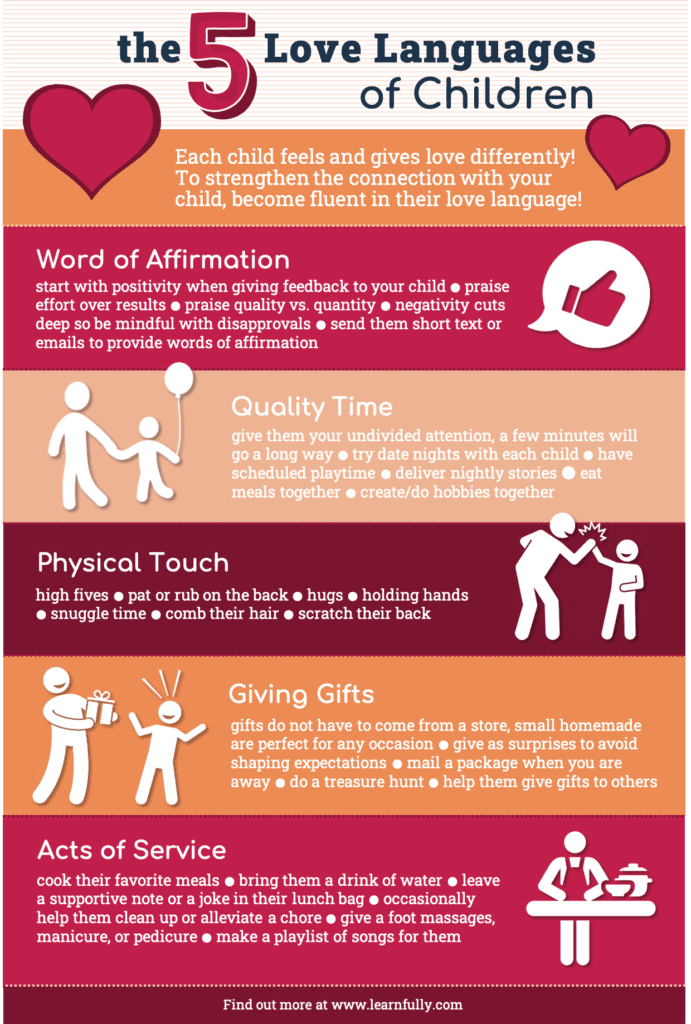Love is innate and provides feelings of safety and security. Especially in these unprecedented times, learners need to feel a strong level of stability in order to take risks in their learning environments. The five love languages, developed by Dr. Gary Chapman and Dr. Ross Campbell help us better understand how our children give and receive love.
“Our basic emotional need is not to fall in love but to be genuinely loved by another, to know a love that grows out of reason and choice, not instinct. I need to be loved by someone who chooses to love me, who sees in me something worth loving.”
Five Love Languages for Children
According to their theory, we all express and experience love in one of five ways:
- Words of Affirmation,
- Quality Time,
- Physical Touch,
- Giving Gifts
- Acts of Service.
Children age four and younger remain in an exploration and discovery mode, while anyone five years and older start attaching themselves to a love language. There are many ways to gauge and then speak your learner’s love languages! The first step is to figure out what language you and your learners speak, then dive into communicating accordingly.
What is your Learner’s Language?
Let’s explore each love language a little more so that you can ascertain what love language your learner speaks!
“You rock!” Does your learner light up when he/she receives verbal praise? Words of Affirmation are one of the more common love languages.
Date Nights: Does your learner sit and wait by your side while you prep, cook, talk on the phone, exercise or work? Children who yearn for quality time usually prefer 1:1, 10- 15 minutes can go a very long way!
High Fives: Does your learner reach for a high five directly after feeling success? Although the pandemic has added a layer of challenge when it comes to touching, educators and parents have developed really snazzy alternatives like air-fives!
Treasure Hunts: Does your learner follow their behaviors with questions about what they can expect to receive in return? Gift-giving, even though common, can require some creativity as well to avoid developing expectations in your children.
Make & Bake: Does your learner get a little pep in his/her step when you make something together? Acts of Service can fill both of your hearts and, honestly, do not take too much effort!
Speak Up!
The graphic below can easily serve as a springboard into both your discovery and execution of each learner’s love language. Speaking your learners’ love languages can change your household and classroom communities almost instantly because of the comfort and happiness it brings. It is important to note that love languages can shift situationally or as one ages, so you might need to refresh your thinking occasionally to ensure that you are expressing the language your learner loves!
To learn more about what brings your learner feelings of joy, take this fun-filled quiz together or as a class and let us know what you uncover!












